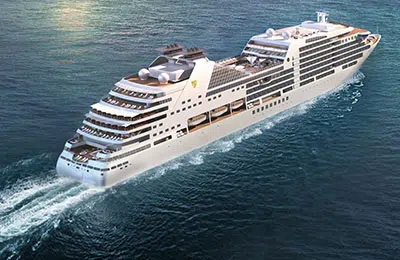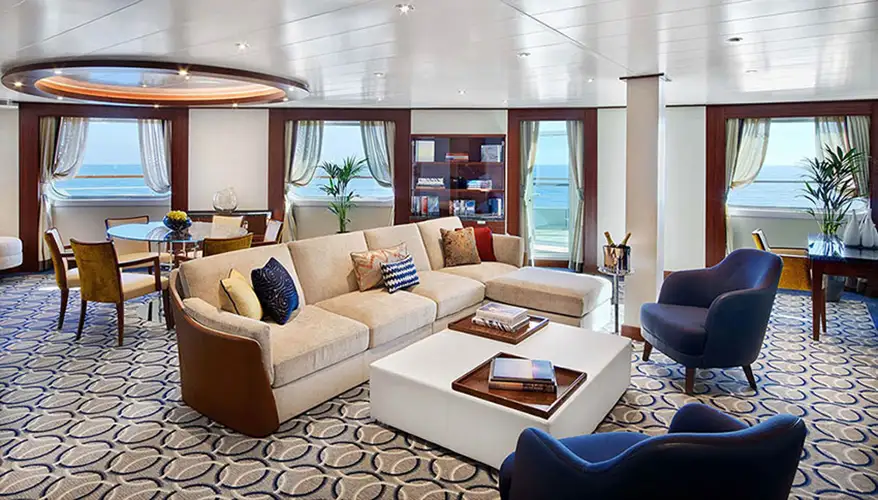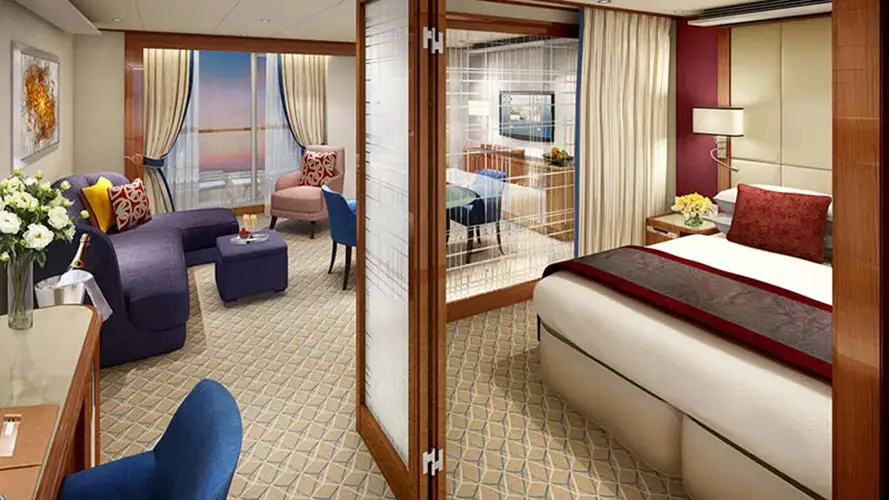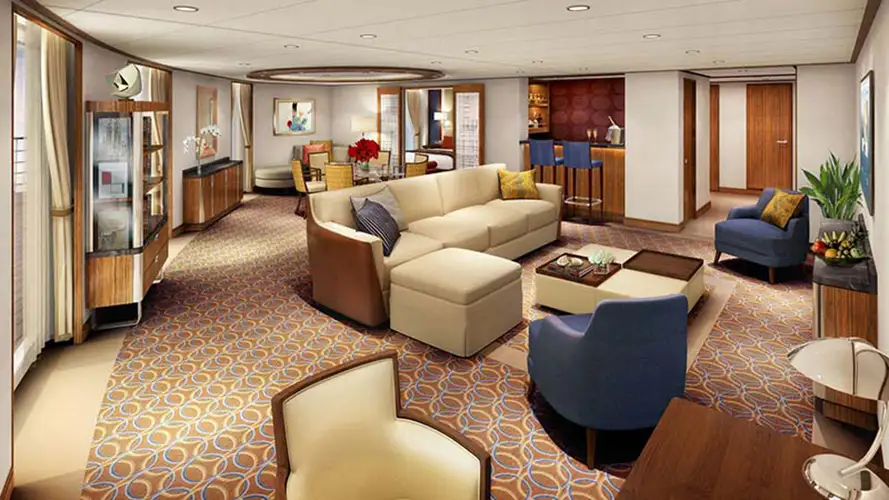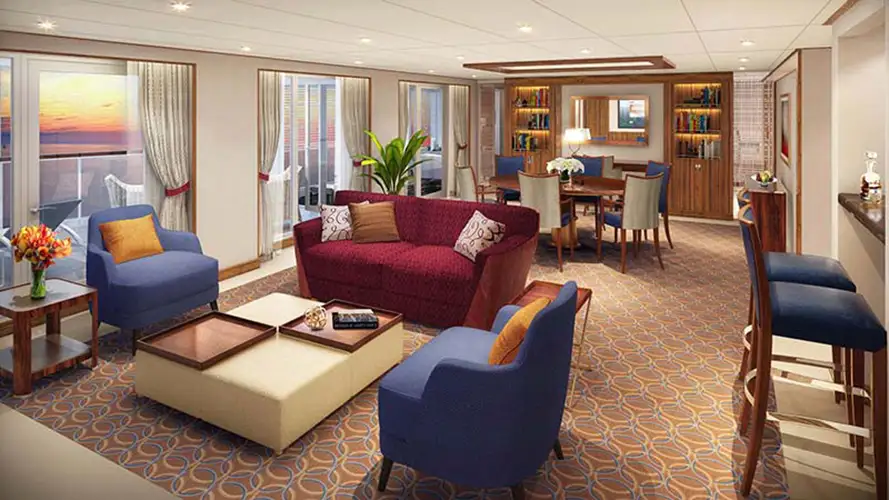Seabourn Greek islands: 7 nights from Venice with Seabourn Encore
Oct 12, 2025
Italy, Croatia, Montenegro, Greece
Cruise itinerary
Departure Port: Venice ➞
Landing: Athens
-
Sunday, October 12, 2025 - 5:00 PMVenice
-
Monday, October 13, 2025 10:00 AM - 6:00 PMSibenik
-
Tuesday, October 14, 2025Navigation
-
Tuesday, October 14, 2025 8:00 AM - 3:00 PMKotor
-
Wednesday, October 15, 2025 8:00 AM - 6:00 PMKorfu
-
Thursday, October 16, 2025 8:00 AM - 5:00 PMSami
-
Friday, October 17, 2025Navigation
-
Saturday, October 18, 2025 8:00 AM - 5:00 PMNauplion
-
Sunday, October 19, 2025 7:00 AMAthens
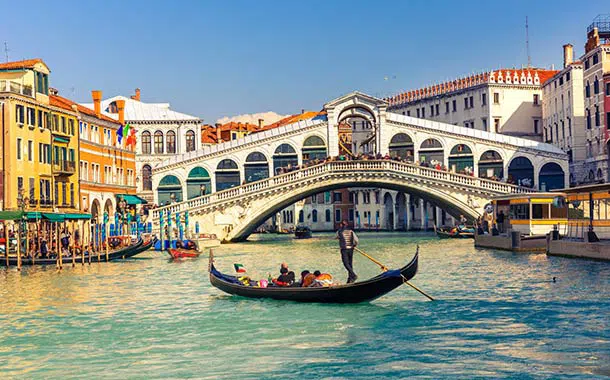
Venice
Setting sail from Venice on a cruise ship is unique and unforgettable. Discover all the cruises that depart from Venice for a great start to your holiday!
Venice it is one of the golden destinations of our age. A unique city of 120 islands, with an ancient history and endless waterways, it attracts a constant flow of tourists from all over the world to see its inspiring architecture and navigate its canals.
There are many souvenirs you can bring home from Venice, but the most lasting memory will be your impression of the city itself.
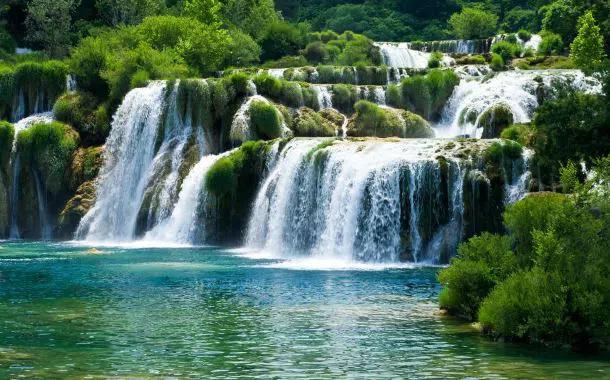
Sibenik
Sibenik is a Croatian city, which is located on the beautiful coast of Dalmatia. Famous for its Saint-Jacques cathedral, which appears on the UNESCO World Heritage List. The peculiarity of Sibenik is its traditional hat in orange and black which also represents the colors of the city. Known for its scenic beauty and the cultural richness of its historical monuments. Do not miss the statue of King Petar Kresimir IV between the park and the start of the walk along the sea. For a short period of history, Sibenik was the seat of the King of Croatia. The metropolis was under Venetian rule for almost 300 years. The old part of the city, rich in churches, palaces and ancient noble houses in typical Dalmatian stone and well-preserved walls, a real jewel. One of the most interesting sites is the garden of the medieval monastery. Sibenik has a Mediterranean climate with summer temperatures around 30 °C. The driest months, therefore the best for traveling, are July and August. A few hundred meters along the coast you will find numerous bars, restaurants and pizzerias. During the summer nights you can walk in the city and enjoy the delicious ice cream, usually homemade. In summer, there are also many popular and classical music concerts.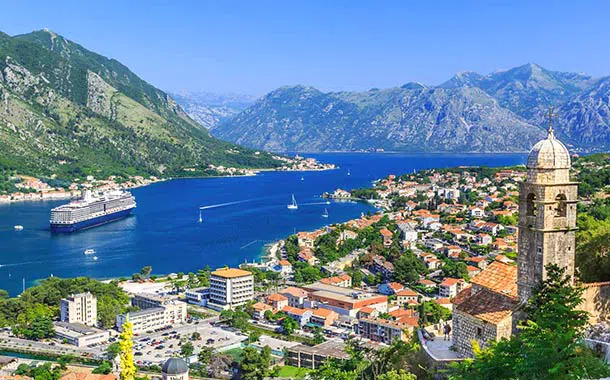
Kotor
The Adriatic Sea penetrates the jagged coast of Montenegro and winds between high mountains until it meets the exquisite and walled medieval city of Kotor.
Along the Adriatic coast of the former Yugoslavia, we find one of the most unique and fascinating European coastal areas, the city hidden in Montenegro, Kotor.
Located at the bottom of a bay, the beautiful medieval city of Kotor is considered a Mediterranean location surrounded by cliffs and an interesting historic wall. The tourist attractions of Kotor are easily reached with a pleasant walk. This small walled city, declared a UNESCO World Heritage Site, has compact dimensions that make it comfortable and easy to visit.
The central part of Kotor was built between the XII and XIV centuries. A historic center surrounded by a rather thick wall, four and a half kilometers long and fifteen meters high. This immense fortified wall reaches the bastion of Sveti Ivan (San Giovanni).
Inside the walls, it preserves an urban network cut into the stone. Its most emblematic work is the Cathedral of San Trifone, built in the 12th century. Inside the church it contains objects and frescoes sculpted during the 14th century. Furthermore, The Orthodox Church of San Nicolas, built between 1902 and 1909 in neo-Byzantine style and that of San Luca (13th century) built in Romanesque and Byzantine style.
Together with the churches, the city includes many palaces that tell its history: the Maritime Museum, located in the Grgurina Palace, a splendid baroque building located in the historic center of the country. The Drago house, with its beautiful Gothic windows, the Prima building, where Renaissance and Baroque lines are combined, the Ducal Palace and the Bizanti, both from the 17th century and the Napoleonic theater in the 19th century.
In Kotor, it is very common to see locals located along the rocky coast in the lower part of the city. In the old part of the area you will find many shops and restaurants that will delight your eyes. This location is the classic ideal city to spend quiet days or for a romantic getaway.
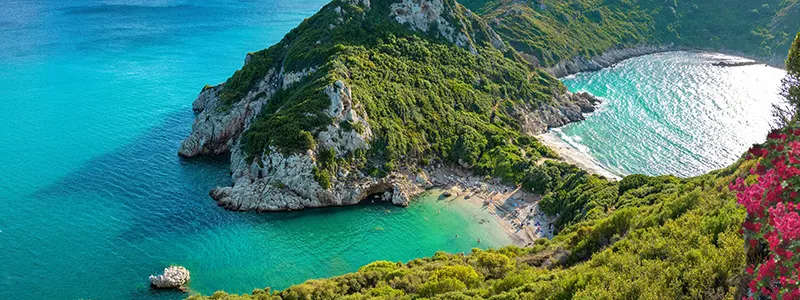
Korfu
Corfù is a Greek island in the Ionian Sea, located off the northwestern coast of Greece and south of Albania. The Greek island is a natural paradise. It is the second largest island of Greece, with 220 km of coastline. Its geography is dominated by mountain ranges and reaching 1000 meters above sea level, you will find Mont Pantokrator.
This mountain divides the island into three different areas. The northern area, abundant in olive groves, features green valleys and coastlines that form both small and large bays. The central part, the most populous and important, is covered by dense vegetation and lush hills.
The southern area consists of a large plain with less vegetation than the other regions but is decidedly more fertile. The most lively part of the city is found at Liston, similar to Paris’ Rue de Rivoli- a grand avenue lined with beautiful cafes and excellent restaurants. On the other hand, the island also has beautiful beaches washed by the Ionian Sea.
One of the most beautiful walks in the capital is along the harbor promenade, next to the city walls, where you can contemplate the view of the city. Corfù was the first Greek Island to open its doors to tourism, becoming an important international tourist centre that attracts many visitors every year. Even if tourism is evident in the coastal areas, the island has managed to preserve its authenticity.
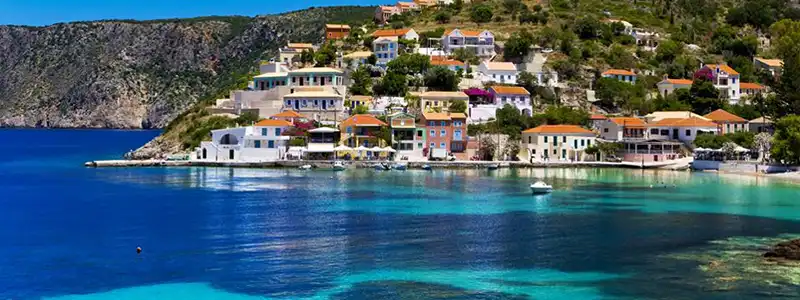
Sami

Nauplion
Gracious Greek city of the Peloponnese, Nauplia is a historic and tourist resort.
This small port has had numerous influences, in particular for the Italian ones. Rich in charisma, in fact, it hides a fascinating past, in particular, it was the first capital of the country after the end of Turkish domination in 1822. Athens then took over. Subsequently occupied by the Byzantines, Franks, Venetians, and Turks, the village preserves a cosmopolitan and multicultural dimension.
The climate of the region is frugal and allows you to experience mild temperatures throughout the year. Sunny days make it a destination accessible in every season.
The Venetian occupation has left numerous traces, such as the citadel of Palamidi which majestically dominates the city. Surrounded by long stone walls and houses with small courtyards, the notable chapel designed by the French architect Lasalle emerges in this place. The influence of this occupation is also found in the cobbled and flowered streets, where beautiful Venetian houses nest. Syntagma Square is especially remembered for its archaeological museum built in the early 18th century.
Nauplia also has several places of worship to visit. Discover the cathedral of Agios Georgios dating back to the 16th century, or its Catholic church of Frangoklissia which was originally a mosque.
Thanks to its privileged location, Nauplia is a good starting point for visiting the villages and archaeological sites such as Epidaurus, Tiryns, Mycenae, or Corinth. Discover the temples and ruins of ancient cities and appointments in archaeological museums that are often present next to these sites.
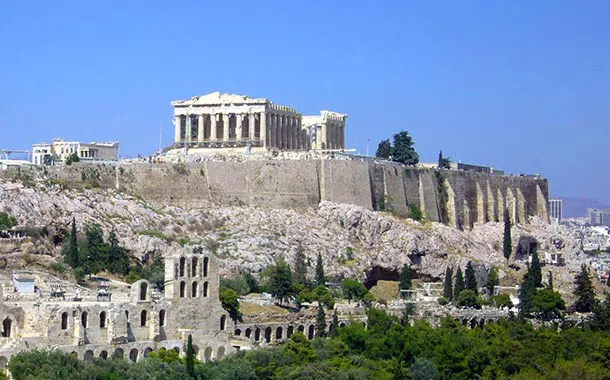
Athens
For many, Athens is a city lived two thousand five hundred years ago. Symbol is the mighty Acropolis which dominates almost every view and itinerary of every visitor, crowned by the iconic Parthenon, stands above the city, watching the sprawling modern metropolis in evolution.
Athens, the capital of Greece, is a city where antiquity and modernity, history and contemporary culture blend in a unique way. Everyone knows that the name of the city derives from the ancient Greek goddess of wisdom and justice. However, few people actually know the legend behind this event. According to myth, Athena and Poseidon, the God of the seas, vied for the right to name the city. Poseidon, to impress the inhabitants, gave them water, while Athena gave them an olive branch.
At first the choice fell on Poseidon, since the citizens considered water the most precious gift. When, once they tasted the water, they discovered that it was salty and not drinkable, they changed their minds and recognized Athena as their patron. One of the most famous historical sites in the city is the Acropolis, a majestic hill topped by ancient Doric temples, including the Parthenon, built in 477 BC. and the Erechtheion, built between 421 and 406 BC. Climbing the Acropolis, tourists can enjoy a breathtaking view of the city and the Aegean Sea. However, Athens is not only history, but also a lively cultural capital. In the Plaka district, located at the foot of the Acropolis, it is possible to stroll through the welcoming streets, visit the traditional Greek taverns and enjoy the authentic atmosphere.
Then there are the numerous cultural activities offered by the numerous museums, galleries and theaters present in the city. Athens is an important port for cruise ships that offer trips to the Mediterranean and beyond. Cruises from Athens allow guests to explore the rich cultural heritage of Greece, including the islands of Crete, Santorini and Mykonos, where you can admire the crystal clear waters of the Aegean Sea and a coast of white houses.
In addition to the Greek islands, cruises from Athens also offer the opportunity to visit other exciting Mediterranean destinations, including historic cities in Italy, Croatia and Turkey. Athens is therefore not only the historical and cultural center of Greece, but also an important starting point for cruises in the Mediterranean, which offers guests the opportunity to immerse themselves in the great history and splendid landscapes of this unique region.
Many still think of Athens as an ancient city that thrived two and a half thousand years ago. Its symbol is the mighty Acropolis, which dominates almost every view and the itinerary of every visitor, and it is crowned by the iconic Parthenon, which rises above the city, overlooking the sprawling and evolving modern metropolis.
Perhaps the most significant change is in the historical centre, which is almost unrecognisable since cars have been banned. This has liberated the area with the most significant archaeological sites, creating the longest, and undoubtedly one of the most splendid, pedestrianised zones in Europe. This huge archaeological park has brought past and present together, returning the cultural and social life of the city to the area around the ancient monuments and surrounding neighbourhoods.
Athens remains a city of contradictions; it is both frustrating and seductive. It is the oldest city in Europe, yet still in a state of transition. It is one of the safest and most vibrant European cities - an intoxicating mix of grunge and grace with an undeniably urban soul.
